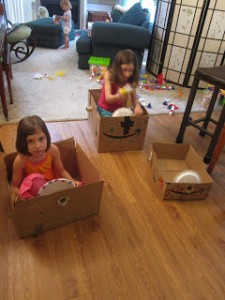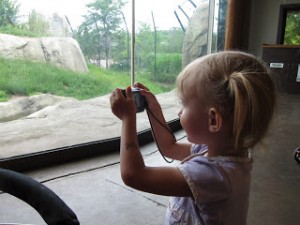When I talk about strengths-based learning, parents and educators may wonder exactly what that looks like. Am I talking about only pursuing things that are a strength or gift for a person? I mean, doesn’t every task or job have elements of weakness involved, or things we don’t like?
I remember coming across the adage from Confucious that says, “Choose a job you love, and you will never have to work a day in your life.” I contemplated that and wondered how such a job would look. I had worked enough jobs that I enjoyed, but also knew there were always certain things that I didn’t like. I decided that work that I loved 60% of the time was worth attaining. And if 30% were elements that enhanced the 60%, it was all the better. Finally, I could always deal with 10% of administrative details. I decided that if I could give that to my children in their learning lives, then I would be showing them what that feels like and what to seek after. That’s how the 60/30/10 Principle was born that is at the heart of my strengths-based learning environment I created for my children.
The other important element to my strengths-based learning is understanding how brain development impacts learning. I combined this knowledge with the 60/30/10 Principle to create a developmentally matched learning environment. The 5 to 7 year stage is when the brain is primarily functioning through it’s dominant side.
Children are young and just learning how to use the brain they were given. My children spent 60% of their time pursuing their natural gifts and strengths. They naturally gravitate to these things, whether it was at a book store, a toy store, a park, a zoo, or any other environment. They would show me what appealed to them. I would spend 30% of their time adding, expanding, or enhancing those interests and strengths. If my son enjoyed sharks, would he also enjoy whales? If he was fascinated by ancient Egypt, would he like to go to a natural history museum? If he enjoyed looking at visual books like Eyewitness books, would he like to make a visual book of his own? The other 10% of the time I used to observe, record, and offer. This was an important time for my discovery to how they learn best.
At the 8 to 10 year brain stage, children are starting to transition to using their less dominant side to learn. The 60% and 30% remain the same as shown above, except that each child was able to engage to a deeper level. I used the 10% time to offer short teaching moments in their less preferred subjects or interests. This was a dabbling more than a full-pressed core. For instance, I might show them what addition and subtraction looked like in manipulatives and written. I might point out simple grammar elements like capitalization and punctuation, nouns and verbs, and how it shows up in their readings.
 This style of interaction to create a strengths-based learning environment requires a shift in perspective. We’re at an exciting time of information sharing with massive amounts of diverse resources and experiences available at our fingertips. Having access to these things allows richer interactions, meaningful connections, and deeper understanding let alone encouraging creativity, individualization, and imagination.
This style of interaction to create a strengths-based learning environment requires a shift in perspective. We’re at an exciting time of information sharing with massive amounts of diverse resources and experiences available at our fingertips. Having access to these things allows richer interactions, meaningful connections, and deeper understanding let alone encouraging creativity, individualization, and imagination.
A homeschooling parent, Lynne’, recently contacted me with her desire to create a more right-brained friendly learning environment for her children. She shared with me how she envisioned it looking, both the shift in perspective for her children and her role as facilitator. She was eager to try it and needed encouragement to begin. Lynne’s motivation for the shift was her realization that her oldest child (age 7) was beginning to avoid learning based on using the traditional learning model of curriculum and the pursuit of certain subjects. I encouraged her to trust her instincts and asked if she would let me know how things go.
A week later, Lynne’ contacted me to share how well things had gone. She had hoped for good things to happen, but certainly didn’t expect them in the first week. She blogged about it here. I read with tears in my eyes what she was observing and experiencing with her children. Lynne’ gave me permission to share because I love how she paid attention to the little things of what she was seeing, the connection to the right-brained information, and collaborating with her children on their learning. Good stuff especially as it well represents the learning stages of 5 to 7 and 8 to 10. Check out her other posts, too.
The stages of 11 to 13 years and 14 to 16 years transitions into a different way of using the 60/30/10 Principle. This is when they move from childhood to adulthood and are ready for mentoring in adult skills, such as goal setting, a work ethic, and self-management. The 60% always remains the same throughout … the young person’s pursuit of their strengths and interests. The 30% represents the parent’s or educator’s role. This is the stage that I appear to deviate from the unschooling perspective I most relate to. Lynne’ mentioned my reference to unschooling as being reflective of my style of learning, but in reality, I have dubbed it as the Collaborative Learning Process based on learning development. Whereas the 5 to 7 and 8 to 10 year stages can look a lot like what unschoolers discuss, my 11 to 13 and 14 to 16 year stages do not. As Lynne’ said, it doesn’t matter what you call it, trust your instinct in creating the best matched learning environment for you and your children.
 I noticed a significant change in my children and how they learned independently at the 11 to 13 year stage. I talk about what is going on here in my post called, The Middle School Teen Brain Shift. This is a major shifting time for young people because of brain development. I wanted to meet my children’s needs based on learning development. All the cues were there to shift, and so I did. Whereas before, most of the collaboration was non-verbal from our children, this is the stage where verbal collaboration can begin because of the brain shift going on. It’s developmentally more probable, with encouragement and mentoring.
I noticed a significant change in my children and how they learned independently at the 11 to 13 year stage. I talk about what is going on here in my post called, The Middle School Teen Brain Shift. This is a major shifting time for young people because of brain development. I wanted to meet my children’s needs based on learning development. All the cues were there to shift, and so I did. Whereas before, most of the collaboration was non-verbal from our children, this is the stage where verbal collaboration can begin because of the brain shift going on. It’s developmentally more probable, with encouragement and mentoring.
The 11 to 13 year stage of brain development is when the less dominant side of the brain is fully integrated. It makes sense, then, that this is the time for formal academics to begin. The focus of my 30% during this stage is on introducing any subject that wasn’t naturally studied by that child previously (you could call it “filling in the gaps”). I verbally collaborate on finding good matched resources so they can begin to learn about their own learning styles. I give full support as I explain in my Middle School post, and eventually help them create their own “learning system” that matches their learning style. I do a lot of the directing of the 30% because they are learning.
 Now comes the 14 to 16 year stage. How exciting to discover that my children processed and integrated the skills mentored (goal setting, work ethic, self-management) to apply it to their gift areas in this stage of 14 to 16 years. Once again, the 60% remains devoted to their strengths and interests of their own initiation. Now, the 30% is being taken over by the young person himself. I found I became a coach at that point, where I would suggest things. Thus, half of the time, the young person implements activities for the 30%, and half the time I do. By the time we hit the 17 to 19 year stage, my children were fully independent in their learning lives.
Now comes the 14 to 16 year stage. How exciting to discover that my children processed and integrated the skills mentored (goal setting, work ethic, self-management) to apply it to their gift areas in this stage of 14 to 16 years. Once again, the 60% remains devoted to their strengths and interests of their own initiation. Now, the 30% is being taken over by the young person himself. I found I became a coach at that point, where I would suggest things. Thus, half of the time, the young person implements activities for the 30%, and half the time I do. By the time we hit the 17 to 19 year stage, my children were fully independent in their learning lives.
Recognizing and understanding how brain development and dominance impacts learning has allowed me to work with my children as they pass through each stage. Embracing and encouraging a strengths-base approach to learning has allowed each of my children to find their passion to eventually find work that they love so they don’t work a day in their lives.
What stage of learning is your child in and how do you see your role as facilitator, mentor, or coach?
If you benefited from this content, please consider supporting me by buying access to all of my premium content for a one-time fee of $15 found here. This will even include a 50% off e-mail link toward a copy of my popular The Right Side of Normal e-book (regular price is $11.95)!








Pingback: Unschooling UnDefined | The Right Side of Normal
Pingback: A Different Process and Product |